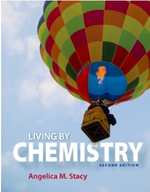Imagine that you dissolve sucrose, C12H22O11(s), in water. a. Write a balanced equation
Chapter 0, Problem 7(choose chapter or problem)
Imagine that you dissolve sucrose, C12H22O11(s), in water. a. Write a balanced equation for this reversible process. b. In which direction does the process proceed if you place a tiny amount of sugar in a large pot fi lled with water? c. In which direction does the process proceed if you allow the water to evaporate from a sugar solution?
Unfortunately, we don't have that question answered yet. But you can get it answered in just 5 hours by Logging in or Becoming a subscriber.
Becoming a subscriber
Or look for another answer
